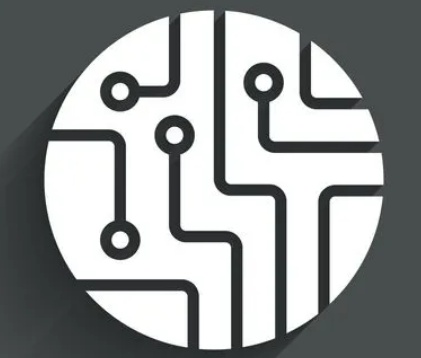
PCB board mounting holes and bracket mounting holes should be reserved, because these holes and the vicinity of the holes can not be wired.
2, according to the circuit function layout
If there are no special requirements, follow the schematic diagram as much as possible
The components are arranged so that signals enter from the left, output from the right, input from the top, and output from the bottom. According to the circuit flow, the position of each functional circuit unit is arranged, so that the signal flow is smoother and the direction is consistent. Each functional circuit as the core, around the core circuit layout, component arrangement should be uniform, neat, compact, the principle is to reduce and shorten the lead and connection between each component. The digital part of the circuit should be arranged separately from the analog part.
3. Distance between components and PCB board edge
All components should be placed within 3mm of the PCB board edge, or at least a distance equal to the PCB board edge thickness, due to pipelining and wave soldering in mass production
When, it should be provided for the guide rail groove to use, but also to prevent PCB board edge damage caused by contour processing, resulting in copper film line fracture and resulting in waste products. If there are too many components on the PCB board, and it is necessary to exceed 3mm, you can add 3mm auxiliary edge on the edge of the PCB board, and open V-shaped slots on the auxiliary edge, which can be broken apart by hand during production.
4. Sequence of component placement
First, place fixed-position components that fit closely with the structure, such as power outlets, indicators, switches and connection plug-ins. Then place special components, such as heating components, transformers, integrated circuits, etc. Finally, small components are placed, such as resistors, capacitors, diodes, etc.
Four, PCB board wiring rules
The PCB wiring rules are as follows:
(1) Line length
Copper film wires should be as short as possible, especially in high frequency circuits. The corner of the copper film wire should be rounded or beveled, and the right Angle or sharp Angle will affect the electrical performance in the case of high frequency circuit and wiring density. When two panels are routed, the wires on both sides should be routed perpendicular, oblique, or curved to each other, avoiding parallel to reduce parasitic capacitance.
(2) line width
The width of the copper film wire should be able to meet the requirements of electrical characteristics and easy to produce as the criterion, its minimum value depends on the current flowing through it, but generally should not be less than 0.2mm. As long as the plate area is large enough, the best choice of copper film line width and spacing is 0.3mm. In general, the line width of 1~1.5mm is allowed to flow through 2A current. For example, the cable width of the ground cable and power cable should be greater than 1mm. When two wires are passed between the IC base pad, the diameter of the pad is 50mil, and both the wire width and the wire spacing are 10mil. When one wire is passed between the pad, the diameter of the pad is 64mil, and both the wire width and the wire spacing are 12mil. Note the conversion between metric and imperial systems, 100mil=2.54mm.
(3) line spacing
The spacing between adjacent copper film wires should meet the electrical safety requirements, and in order to facilitate production, the spacing should be as wide as possible. The minimum spacing can withstand at least the peak of the applied voltage. In the case of low wiring density, the spacing should be as wide as possible.

(4) shielding and grounding
The common ground wire of the copper film wire should be placed on the edge of the circuit board as much as possible. Copper foil should be kept as much as possible on the PCB board as ground wire, so that the shielding ability can be enhanced. In addition, the shape of the ground wire is best made into a loop or grid. Multilayer PCB board can play a better shielding effect because the inner layer is used as the special layer of power supply and ground wire.
Five, PCB board grounding design rules
1. Common impedance interference of ground wire
The ground wire on the circuit diagram represents the zero potential in the circuit, and is used as the common reference point of other points in the circuit. In the actual circuit, due to the existence of ground wire (copper film line) impedance, it will inevitably bring common impedance interference, so in the wiring, can not be connected with the ground symbol points, which may cause harmful coupling and affect the normal work of the circuit.
2. How to connect the ground wire
Usually in an electronic system, ground earth is divided into systematic ground, chassis ground (shield ground), digital ground (logical) and analog ground, etc. When connecting ground earth, you should pay attention to the following points:
(1) Correctly select single point grounding and multi-point grounding
In low-frequency circuits, where the signal frequency is less than 1MHz, the inductance between the wiring and components can be ignored, and the voltage drop generated on the resistance of the ground circuit has a great impact on the circuit, so the single-point grounding method should be used. When the signal frequency is greater than 10MHz, the influence of ground inductance is great, so it is advisable to use the nearby ground multipoint grounding method. When the signal frequency ranges from 1 MHZ to 10 MHZ, if the single-point grounding method is used, the length of the ground wire should not exceed 1/20 of the wavelength; otherwise, multipoint grounding should be used.







